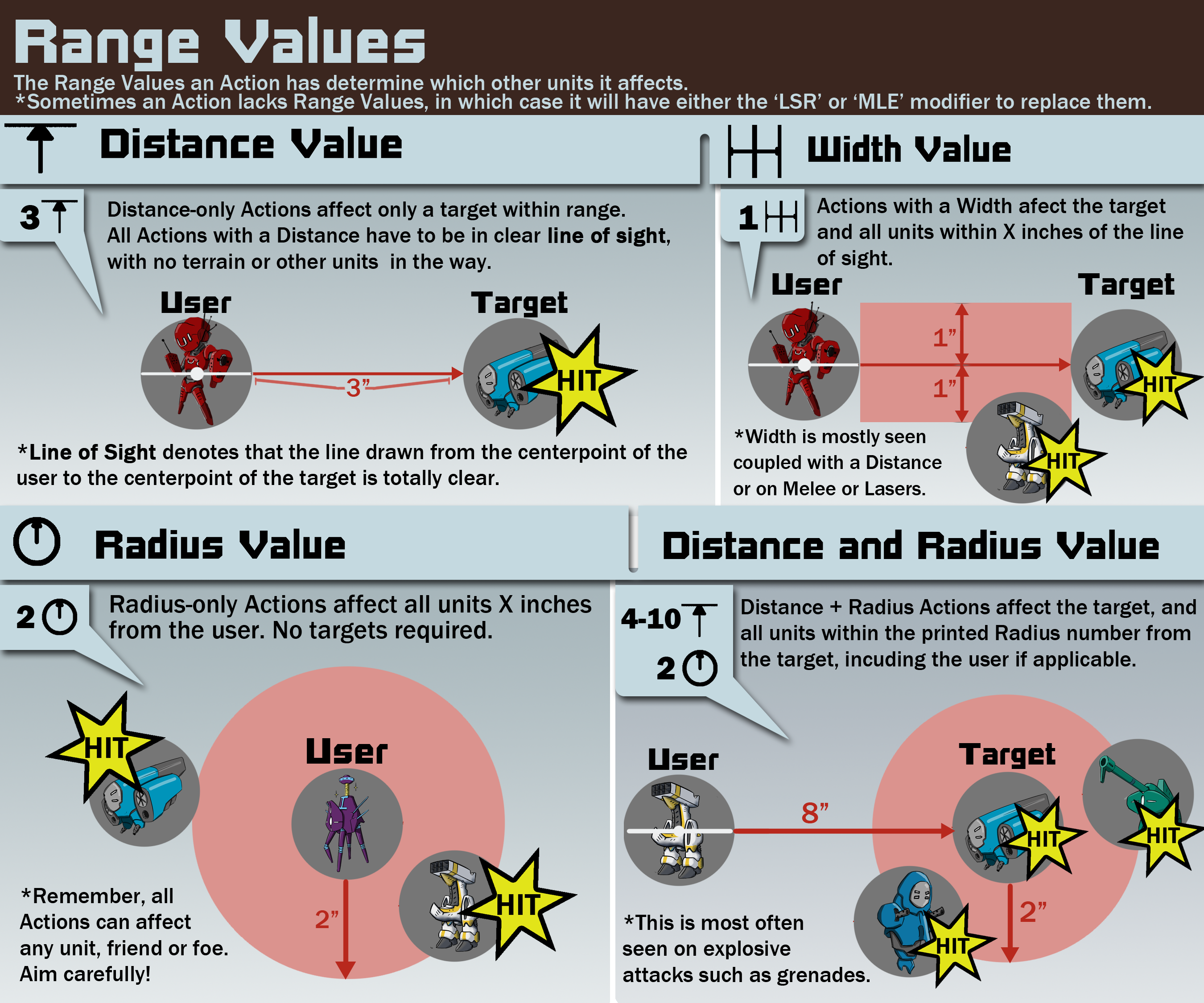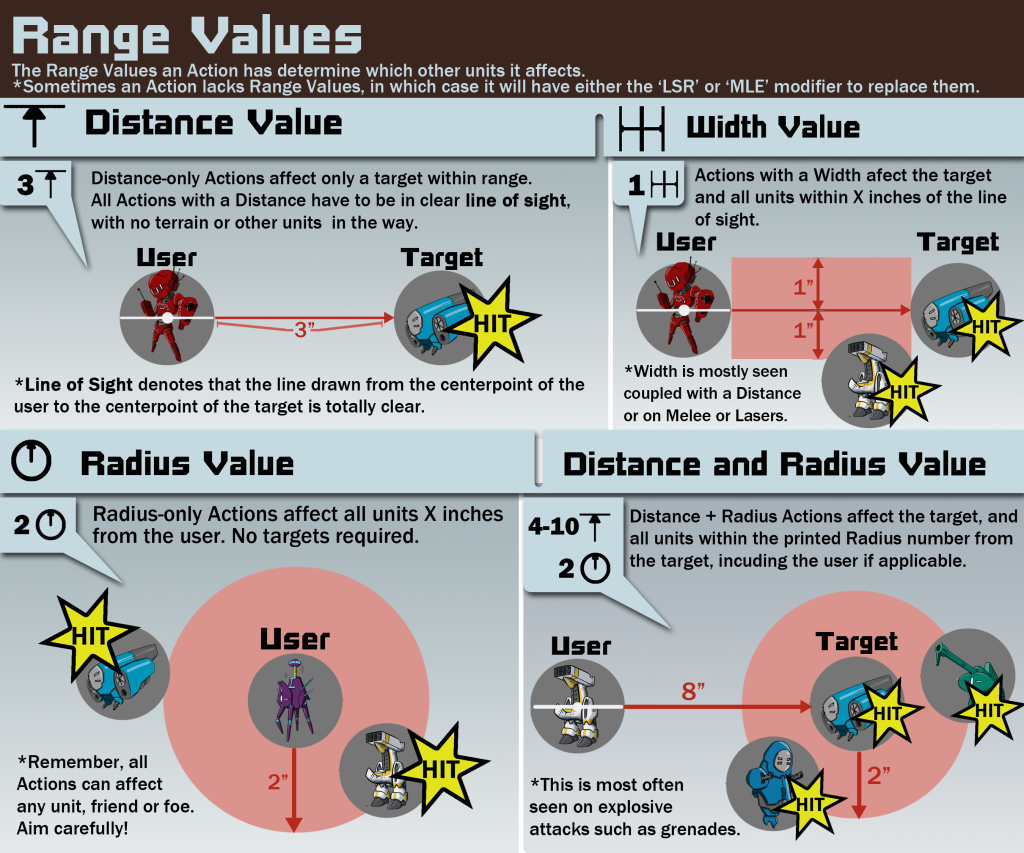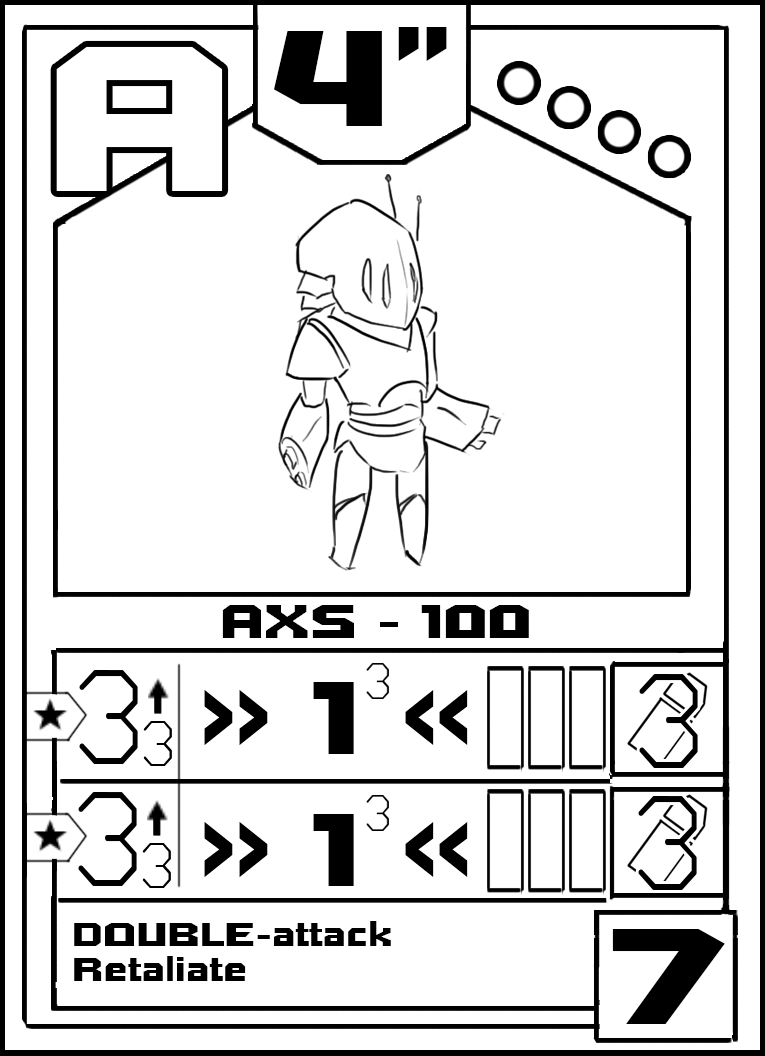#4: Design Darwinism (The dumbest mechanics we’ve scrapped)

Breeze Grigas
A.E.G.I.S. is a very complex game beyond its basic premise, which is “build colorful robot teams that work together, combine and shoot your opponent’s robots into dust”. That premise has never changed, so to us it almost feels like the game hasn’t evolved much in the last year. However, after taking a step back, the game that we’re playing today is a completely different one from the prototype thrown together one year ago.
To celebrate the release of our rulebook, I’m going to go down the list, in chronological order, of the biggest things we’ve culled from our central game design.
1. Robots attacking on the opponent’s turn

Originally the game had a mechanic called “Intercept.” Intercept was to be found on G’s and I’s, the two more control-oriented classes, and units with it could act on the opponents’ turn. As in, they could move, attack and whatever else as long as you had the Energy for it. So players could smack you more right at the start of your turn immediately after their turn was done.
That was terrible, so we decided that robots with Intercept couldn’t act two turns in a row. That decision caused all sorts of weirdness and problems too, like robots getting locked into only acting on the opponents’ turn. It was chopped from the game pretty quickly and later became the purely reactive abilities “Retaliate” and “Retreat“, the latter of which will be in an upcoming release.
2. Keeping track of 20 ammo values
Once upon a time, every attack on every robot in the game had an ammo value. When the ammo ran out, the attack became unusable. Each robot had two attacks. Between you and your opponent, there were 10 robots on the field at the start of the game. It was cool idea because Advance Wars did it, but Advance Wars is also a video game where all the tracking is done for you, along with ammo in that game auto-recovering via parking your tanks on cities and bases, and A.E.G.I.S. there was no such thing, so games could actually stagnate with players having no way to effectively attack each other.
Now, melee attacks also had ammo: the robot’s Integrity. As in, robots with sword and hammer attacks hurt themselves by 1 whenever they took a swing. It was also a bad idea.
We also cut this very early, and a lesson was learned about the difference between computer and board game mechanics.
3. Reverse accuracy

The method to attack in A.E.G.I.S. is really simple: You pay, say 3 energy, roll 3 dice, and those dice have to land on or above the Accuracy Number for the attack to succeed. Then the opponent’s robot takes damage. There are abilities like Evade and accuracy altering attacks that make this easier or harder. But what if your attacks’ dice had to land on or below the Accuracy Number, indicated by a downwards arrow? Oho! The main function of this, aside from novelty, was that attacks with a down arrow couldn’t have their accuracy altered. (This concept later became the “AIM” attribute.)
This was a mainstay mechanic for quite a few months and was cut some weeks before the Boston Festival of Indie Games, right around the time we first redesigned the card template. I have a little faith that this will show up at some point in the future, when we find a good reason to use it.
Why did the attribute boxes(the things that say MEL and AA on the right) from our early concept go from 3 to 5 per ability? I have no idea.
4. AAAAA-Class robots
This was never actually in the game to start, but for a very long time there was the question of whether robots of the same Class should be able to combine. Currently there are 31 different Classes in A.E.G.I.S.; A, E, G, I and S, and then 10 combinations of two, 10 combinations of three, 5 combinations of four, and then level 5 combinations. I feel that this gives us quite enough design space to work with for a very long time before we need to delve into creating infinite different Class combinations.
There was once a mechanic in the game that allowed you to combine robots of the same Class just for the sake of giving up one robot to recover Integrity of another, much like a similar feature in Advance Wars. Its fate is in limbo, because it’s very sound and strategic. We just forgot about it, and the game has enough going on as-is. It might return though, some day.
5. “How wide is your attack?”

The most recent thing to be axed from the game is the lost third range value, “Width.” for a very long time, the game was to be a traditional miniatures game where you measured everything in inches, so having a width value made a little bit of sense. It was used on laser attacks almost exclusively, to give them some width so that it was easier to hit multiple things in a line. It was also to be used on attacks like flamethrowers and shotguns, to give the attacks a “hitbox”.
There were two problems: First, it was another symbol on the card that was used maybe 5% of the time, and whenever I would explain the game I’d just say to ignore it. Second, when we made the transition over to the game being on hexes as a standard, width was literally impossible to make sense. We anguished over the dilemma for a few days and then decided to remove it altogether. It was a lesson learned in design essentials: you treat your game (or any other creation meant for human use) like a cluttered room. Sometimes it’s good to remove everything from that room and put back only what actually matters. Width was like a rickety bookshelf you keep trash on that’s taking up a half the wall. We got rid of it, and it’s like we never lost a thing.
Things Change
Those were the biggest things that we took out of our game that can be categorized. The rest of the game has also evolved very gradually, from identifying what Classes can and can’t do to adjusting how strong, mobile and durable different robots should be. With each minor change, the game got tighter, faster to play and easier to grasp. We’re all very proud of where the game is now, and with all the things we’re learning, the game can only get better from here.

